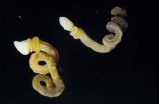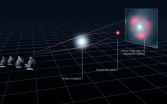(Press-News.org) Doctors at Yale School of Medicine and the American Academy of Neurology (AAN) have called upon their fellow physicians to limit or end the practice of prescribing memory-enhancing drugs to healthy children whose brains are still developing. Their position statement is published in the March 13 online issue of the journal Neurology, the medical journal of the AAN.
The statement was written to address the growing trend in which teens use "study drugs" before tests and parents request attention deficit hyperactivity disorder (ADHD) drugs for children who don't meet the criteria for the disorder. The AAN spent several years analyzing all of the available research and ethical issues to develop this official position statement on the topic.
"Doctors caring for children and teens have a professional obligation to always protect the best interests of the child, to protect vulnerable populations, and to prevent the misuse of medication," said first author of the statement, William Graf, M.D., professor of pediatrics and neurology at Yale School of Medicine. "The practice of prescribing these drugs, called neuroenhancements, for healthy students is not justifiable."
Graf and a group of child neurologists provide evidence that points to dozens of ethical, legal, social, and developmental reasons why prescribing mind-enhancing drugs, such as those used to treat ADHD, for healthy people is viewed differently in children and adolescents than it would be in functional, independent adults with full decision-making capacities.
Some of the reasons not to prescribe neuroenhancements include: the child's best interest; the long-term health and safety of neuroenhancements, which has not been studied in children; kids and teens may lack complete decision-making capacities while their judgments and cognitive abilities are still developing; maintaining doctor-patient trust; and the risks of over-medication and dependency.
"A physician should talk to the child about the request, as it may reflect other medical, social, or psychological motivations such as anxiety, depression, or insomnia," said Graf, who notes that there are alternatives to neuroenhancements available, including maintaining good sleep, nutrition, study habits, and exercise regimens.
###
Other authors on the position statement include Saskia K. Nagel, Leon G. Epstein, M.D., Geoffrey Miller, M.D., Ruth Nass, M.D., and Dan Larriviere, M.D.
Citation: Neurology 80 (March 13, 2013) END
This press release is available in French.
Christopher Cameron of the University of Montreal's Department of Biological Sciences and his colleagues have unearthed a major scientific discovery - a strange phallus-shaped creature they found in Canada's Burgess Shale fossil beds, located in Yoho National Park. The fossils were found in an area of shale beds that are 505 million years old.
Their study, to be published online in the journal Nature on March 13, 2013, confirms Spartobranchus tenuis is a member of the acorn worms group which are seldom-seen animals that thrive ...
Canada's 505 million year-old Burgess Shale fossil beds, located in Yoho National Park, have yielded yet another major scientific discovery – this time with the unearthing of a strange phallus-shaped creature.
A study to be published online in the journal Nature on March 13 confirms Spartobranchus tenuis is a member of the acorn worms group which are seldom-seen animals that thrive today in the fine sands and mud of shallow and deeper waters. Acorn worms are themselves part of the hemichordates, a group of marine animals closely related to today's sea stars and sea ...
BOULDER, Colo.— One of the oldest forms of computer memory is back again—but in a 21st century microscopic device designed by physicists at the National Institute of Standards and Technology (NIST) for possible use in a
quantum computer.
The NIST team has demonstrated that
information encoded as a specific point in a
traveling microwave signal—the vertical and horizontal positions of a wave pattern at a certain time—can be transferred to the mechanical beat of a micro-drum and later retrieved with 65 percent efficiency, a good figure for experimental systems like this. ...
Observations with the Atacama Large Millimeter/submillimeter Array (ALMA) show that the most vigorous bursts of star birth in the cosmos took place much earlier than previously thought. The results are published in a set of papers to appear in the journal Nature and in the Astrophysical Journal. The research is the most recent example of the discoveries coming from the new international ALMA observatory, which celebrates its inauguration today.
The most intense bursts of star birth are thought to have occurred in the early Universe, in massive, bright galaxies. These ...
A new method of magnetic resonance imaging (MRI) could routinely spot specific cancers, multiple sclerosis, heart disease and other maladies early, when they're most treatable, researchers at Case Western Reserve University and University Hospitals (UH) Case Medical Center suggest in the journal Nature.
Each body tissue and disease has a unique fingerprint that can be used to quickly diagnose problems, the scientists say.
By using new MRI technologies to scan for different physical properties simultaneously, the team differentiated white matter from gray matter from ...
BOSTON – March 13, 2013 – Joslin scientists have discovered a mechanism that regulates the production of brown fat, a type of fat which plays an important role in heat production and energy metabolism. The findings, which appear in the upcoming issue of Nature, may lead to new therapies that increase BAT formation to treat obesity.
Two types of fat tissue are present in humans and other mammals: white adipose tissue (WAT) or white fat, which stores fat; and brown adipose tissue (BAT) or brown fat, which burns fat to produce heat. Brown fat also metabolizes glucose and ...
Boston, MA – New research from Harvard School of Public Health (HPSH) shows that one year after the federal government passed a law banning word descriptors such as "light," "mild," and "low" on cigarette packages, smokers can still easily identify their brands because of color-coding that tobacco companies added to "light" packs after the ban. These findings suggest that the companies have, in effect, been able to evade the ban on misleading wording—thus still conveying the false and deceptive message that lights are safer than "regular" cigarettes.
In addition, the ...
Pasadena, CA — Using information gathered from several telescopes, a team of astronomers, including Carnegie's Eric Murphy, searched the sky for very rarely seen dusty starburst galaxies, formed soon after the Big Bang. These galaxies are characterized by an unusually high rate of star formation. They are much more abundant in the early Universe than previously thought. Two of those identified are among the oldest ever found, indicating that these dusty starbursts likely evolve into the most massive galaxies ever observed in the local Universe. The results are published ...
Astronomers using the Atacama Large Millimeter/submillimeter Array (ALMA) telescope have discovered starburst galaxies earlier in the Universe's history than they were previously thought to have existed. These newly discovered galaxies represent what today's most massive galaxies looked like in their energetic, star-forming youth. The research is the most recent example of the discoveries coming from the new international ALMA observatory, which celebrates its inauguration today.
The results, published in a set of papers to appear in the journal Nature and in the Astrophysical ...
The incidence of genital warts, or condylomata, declined by 93 per cent in girls given the HPV vaccine before the age of 14, according to a Swedish national registry study. The study was carried out by researchers at Karolinska Institutet in Sweden, and published in Journal of the National Cancer Institute.
Using a selection of population-based registries, the researchers at Karolinska Institutet studied 124,000 girls and women in Sweden between 10 and 44 years old who had received the HPV vaccine against condyloma and cervical cancer at some time between 2006 and 2010. ...



